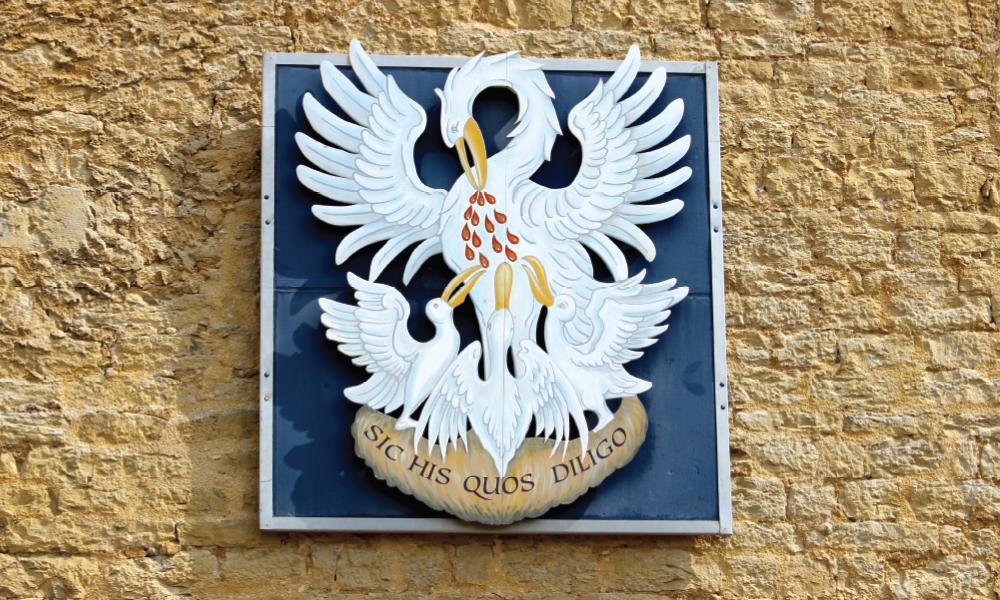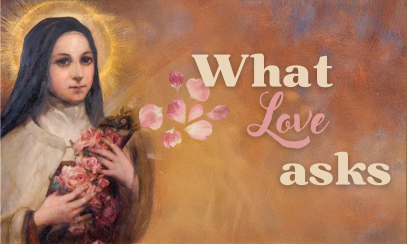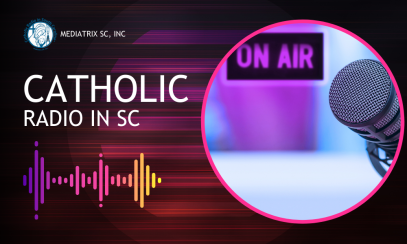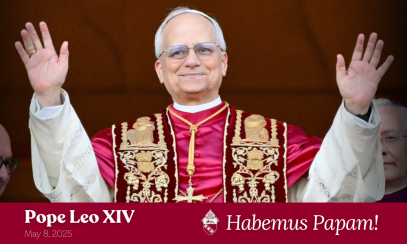
The Pelican and a Christmas Communion
To the right of the ornate metal gate at the center of the marble altar rail at our motherhouse chapel is a round bas-relief of a phoenix. To the left is a pelican feeding its young, blood dripping from its breast. My religious community’s motherhouse is a minor basilica, and it is rich in marble, mosaic, statuary and stained glass. Classic Christian symbols abound. But these two symbols — the phoenix and the pelican — catch the eye of anyone processing to the sanctuary.
To the right of the ornate metal gate at the center of the marble altar rail at our motherhouse chapel is a round bas-relief of a phoenix. To the left is a pelican feeding its young, blood dripping from its breast. My religious community’s motherhouse is a minor basilica, and it is rich in marble, mosaic, statuary and stained glass. Classic Christian symbols abound. But these two symbols — the phoenix and the pelican — catch the eye of anyone processing to the sanctuary.
The legendary phoenix rises from its own ashes and is born into new life. From the late first century on, in the writings of Pope Clement, the phoenix has been cited as a symbol of Christ’s resurrection. By the second century A.D., a work called the Physiologus described animal imagery used in Christian teaching. It included the pelican. According to legend, the pelican will use its long beak to pierce its own breast and feed its hungry nested young with its own blood. Thus, the pelican has been used as a symbol of Christ’s sacrificial offering of himself on the cross and his gift of the Eucharist.
Those of us who have made daily Mass a practice for decades can become so routine in the practice that we are dulled to what is actually happening. We’re reliving and participating in a miracle that has been repeated for millennia, one which encircles the globe daily. Jesus Christ — body and blood, soul and divinity — is really present and offers himself to us over and over. But, in the midst of talk of fellowship and the familiarity of ceremony, we can begin to minimize the sacrificial character of the Mass.
Christ’s sacrifice is for us and empowers us. Christ-in-us calls for our transformation such that we become more self-sacrificial, more fully oriented to God and will the good of the other. St. Augustine is variously quoted on this dynamic. One version has him instructing the communicant, “Believe what you see, see what you believe, and become what you are: the Body of Christ.” Another version offers the admonition “Behold what you are, Body of Christ. Become what you receive.”
It sometimes takes a dramatic moment to bring home to us the majesty and mystery of the Eucharist. Two of us sisters had such a moment during the COVID-19 pandemic.
On Christmas morning, we called a woman in our parish who was the round-the-clock caregiver for her dying husband. We learned that she had somehow been missed in parish communion calls, which had not fully resumed at that point. So we offered to bring a host from our convent tabernacle. She noted that her husband would no longer be able to receive.
After we offered prayers and gave the woman communion, we sat silently and then chatted quietly. She lamented that Fred, a convert from Judaism who had sung in their parish choir, had been so long without Eucharist. So she went to his bedside, gently kissed him and told Fred that she had just received Jesus — and that she was bringing him with her kiss. A visible calm came over Fred.
Within a half hour of our arrival home, the phone rang, and we learned that Fred had died. The comfort which reception of the Eucharist had given the woman had been evident in her gentleness and tears. The tender care she had given her husband, and the last, loving eucharistic kiss exemplified what Augustine taught: we are called to become, and can be, what we receive: the body of Christ.
Our resurrection faith, our phoenix, fills us with hope. And, like the pelican’s young, we feed unselfconsciously from his love.
Sister Pamela Smith, SSCM, Ph.D., is the diocesan director of Ecumenical and Interreligious Affairs. Email her at psmith@charlestondiocese.org.



